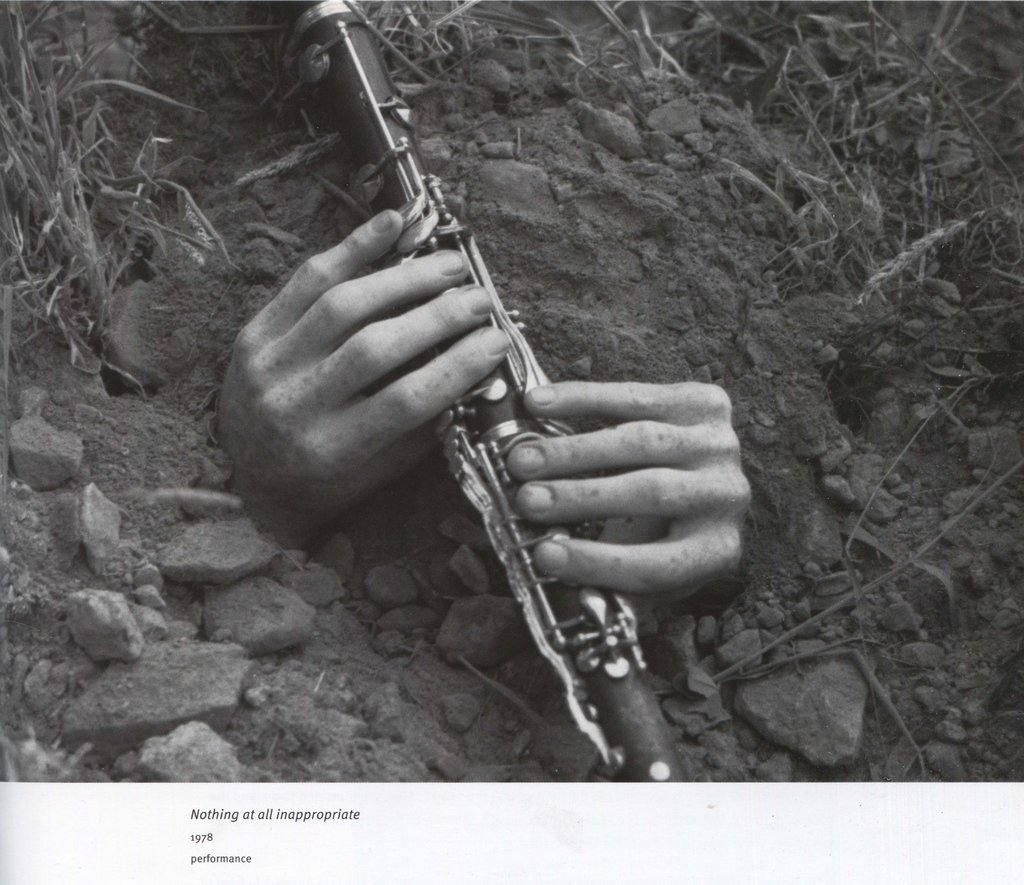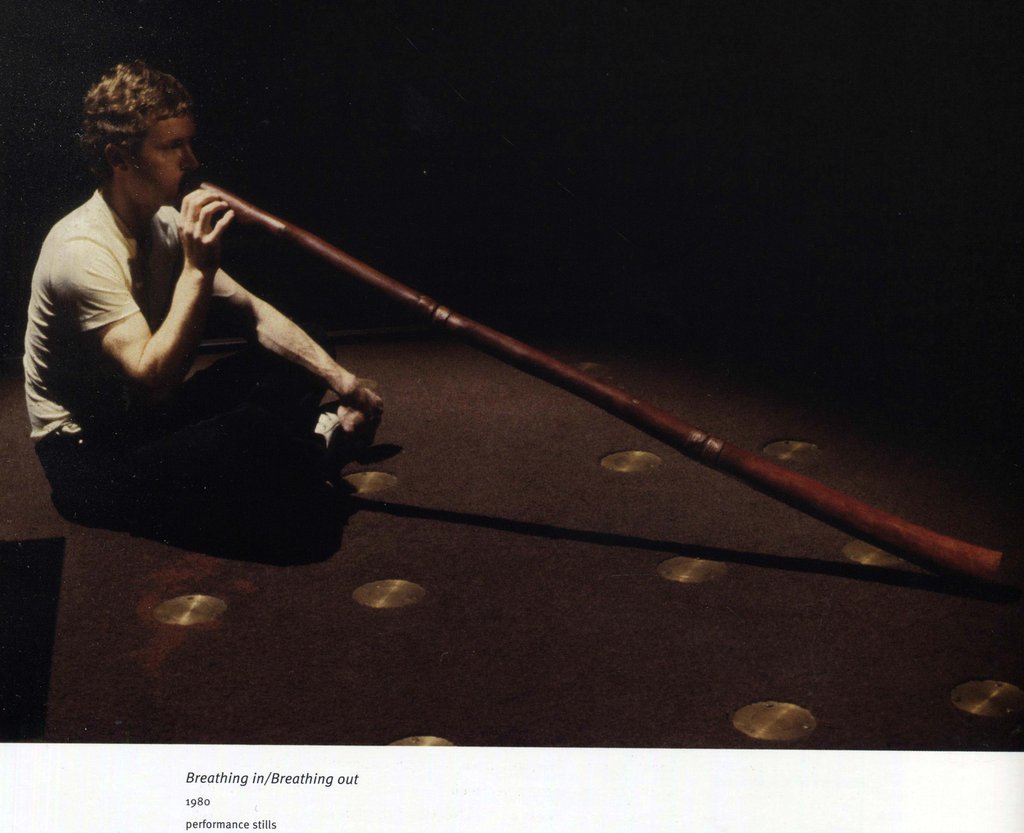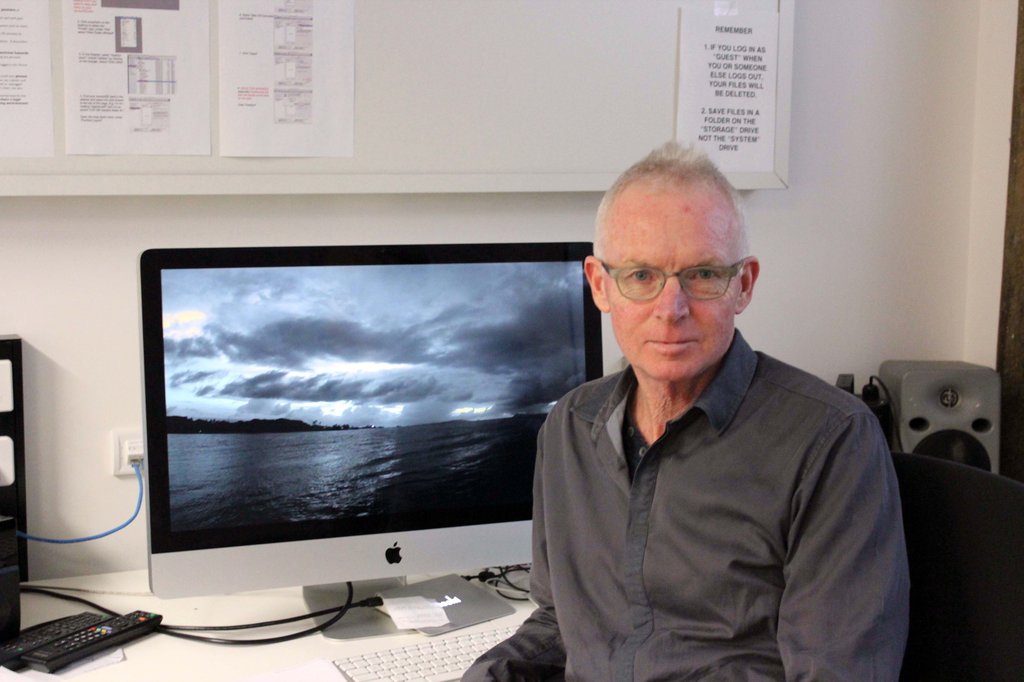

We invite you to explore the key milestones, stories and personalities of our history in our 125 Years Timeline. We also invite you toShare your story and become part of our digital history.
From teaching didgeridoo to troubled Aboriginal students to exhibiting at the prestigious Paris Biennale, University of Tasmania Electronic media lecturer Leigh Hobba had a rich and enriching career as teacher and artist.
Three years ago I remember a video was played at my first lecture at the Tasmanian College for the Arts. It was called ‘Why be an Artist’. The bleakly amusing film, narrated by Noel Sheridan, stresses that one becomes an artist because there is no other choice; the artist is driven to create.
I didn’t know it at the time, but the film was videoed, edited and produced by Leigh. As a student of Leigh’s in 2012 and 2014, I have come to see that the message communicated in ‘Why be an Artist’ perfectly sums up his philosophy towards art and life.
Leigh graduated with honours from the Elder Conservatorium at the University of Adelaide in 1975, majoring in woodwind and musical education. He then began working with experimental sound, video, performance and installation art in the late 1970s and was heavily involved with the experimental art foundation in Adelaide.

While focusing on his art practice, Leigh also had various positions related to education. ‘It was a good backup. I was always using teaching really to support my habit, which was art.’ One particular job that Leigh appears to hold close to his heart was his time as a director at the Centre for Aboriginal Studies in Music in Adelaide, which was concerned with bringing young urban musicians into contact with tribal musicians.
One of the students Leigh taught was a 16-year-old Aboriginal boy named Bart Willoughby, who had been in ‘all sorts of trouble’. Leigh took him under his wing, even teaching him ‘how to play the didgeridoo, crazily enough’. He is now a successful Aboriginal reggae musician.

Bart contacted Leigh recently; ‘He wanted some photos that I had from those times, because I was always documenting, always taking photos. And he wanted them for this tour that he’s on at the moment. I just googled him to see what he was up to. There was this image of him playing a four panel organ in the Melbourne Town Hall, and he writes his own Aboriginal reggae stuff, and he was playing reggae on this huge organ and I just thought, the fact that he contacted me after all these years...’ Leigh’s face flooded with admiration as he told me, ‘there was this young kid and now he’s in the stratosphere’.
In
1980 Leigh was selected as Australia's representative at the
prestigious Biennale of Paris, Museum of Modern Art. After spending some
time in Europe he returned to Australia and looked to settle out of his
hometown of Adelaide and re-establish his art practice. He got a call
inviting him to Tasmania’s Artisan residence at the Art School for 6
months, where he worked on a number of major projects, staying another
year or so. Leigh then returned to Europe a couple of times, deciding in
the middle of an icy European winter ‘that all I wanted to do was come
back and go for a walk in the Tasmanian bush’.
Leigh set up the video department at the Tasmanian College for the Arts in 1983, later evolving into Electronic Media. ‘One thing I’m proud of is being able to sustain Electronic Media as a discipline in the school over all those years under all kinds of threats... I actually felt a bit of responsibility not just to the school, but almost to Hobart to the community to fight for it and keep it alive'.

After 31 years, in 2014 Leigh’s career at the University of Tasmania came to an end. ‘I suddenly feel like I’m into my future... it’s not next year or the year after, and if I’m going to live it I’ve got to live it now and that’s what I’m really quite excited about.’
Bill Hart, Leigh’s former student and electronic media department colleague, says Leigh will be missed. ‘Over the years Leigh has made some pretty thoughtful pieces. Some of them are hard to access, so the retrospective at the Tasmanian Museum and Art Gallery (TMAG) I found was great because you actually got to see them...”, Mr Hart said.
‘The last piece he had at TMAG about his trip to American Samoa; he did a couple of talks about it where he narrated it, as kind of a lecture performance was fantastic, a fantastic piece of work.’
Leigh is currently working on a performance piece with a dance colleague, and is also eager to start some works he’s had on the backburner. Leigh plans to go sailing to Lord Howe Island, as well as develop a project for the 2016 Pacific Arts Festival, to be held in Guam.
Leigh concluded: ‘I guess one of the questions I ask myself now is how can I keep making a positive contribution to culture and to civilisation. Teaching is doing that. That’s what teaching is to me. I just don’t want to go out and sit in the studio and kind of internalise it. I want to work with projects that actually make a positive impact back somewhere and so that’s pretty much embedded in this project that I’m starting to think about towards Guam in 2016.’
About the author: Tahlia Hart interviewed Leigh Hobba and completed this story while she was studying Journalism at the University of Tasmania. Photos supplied to Tahlia by Leigh Hart.